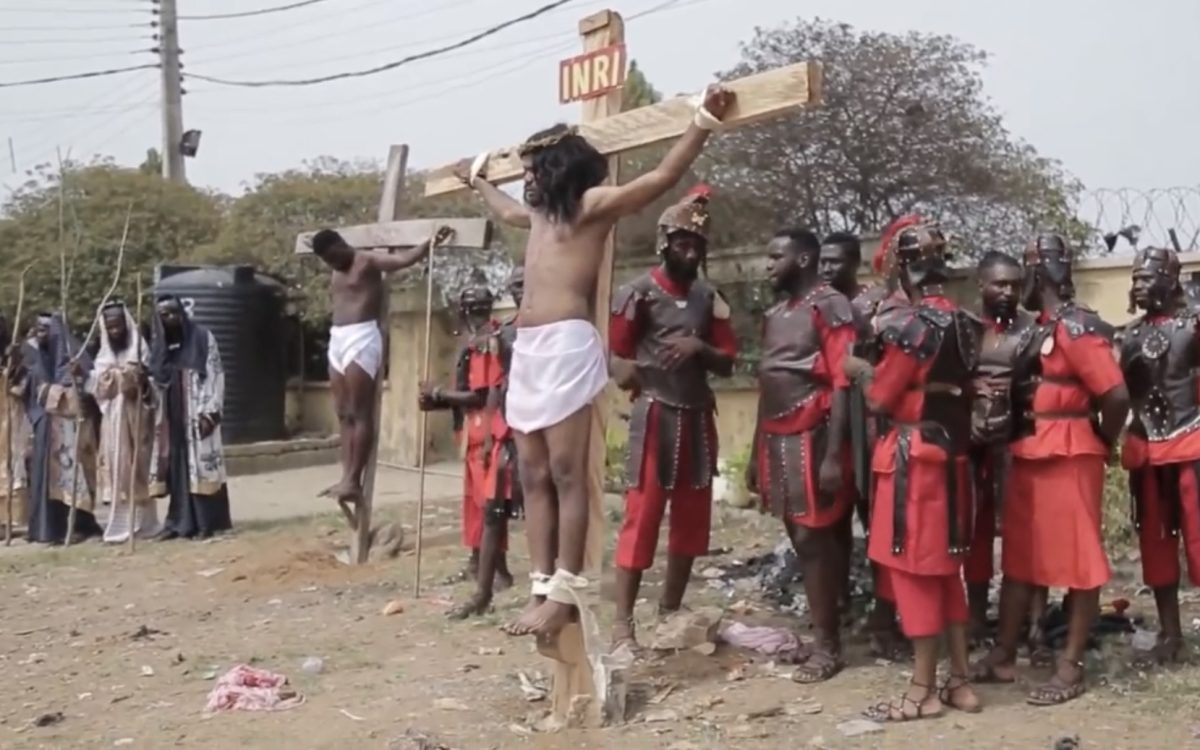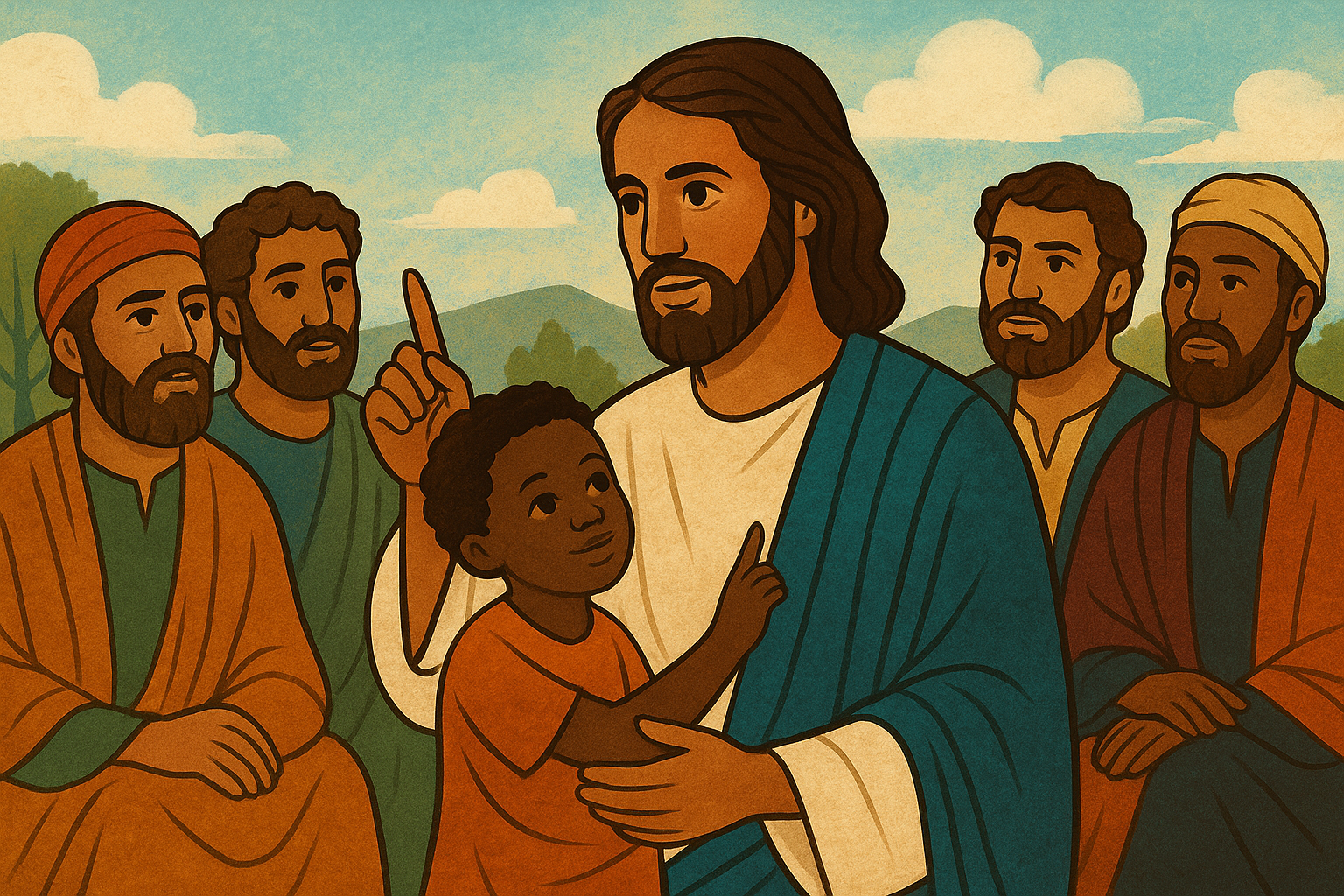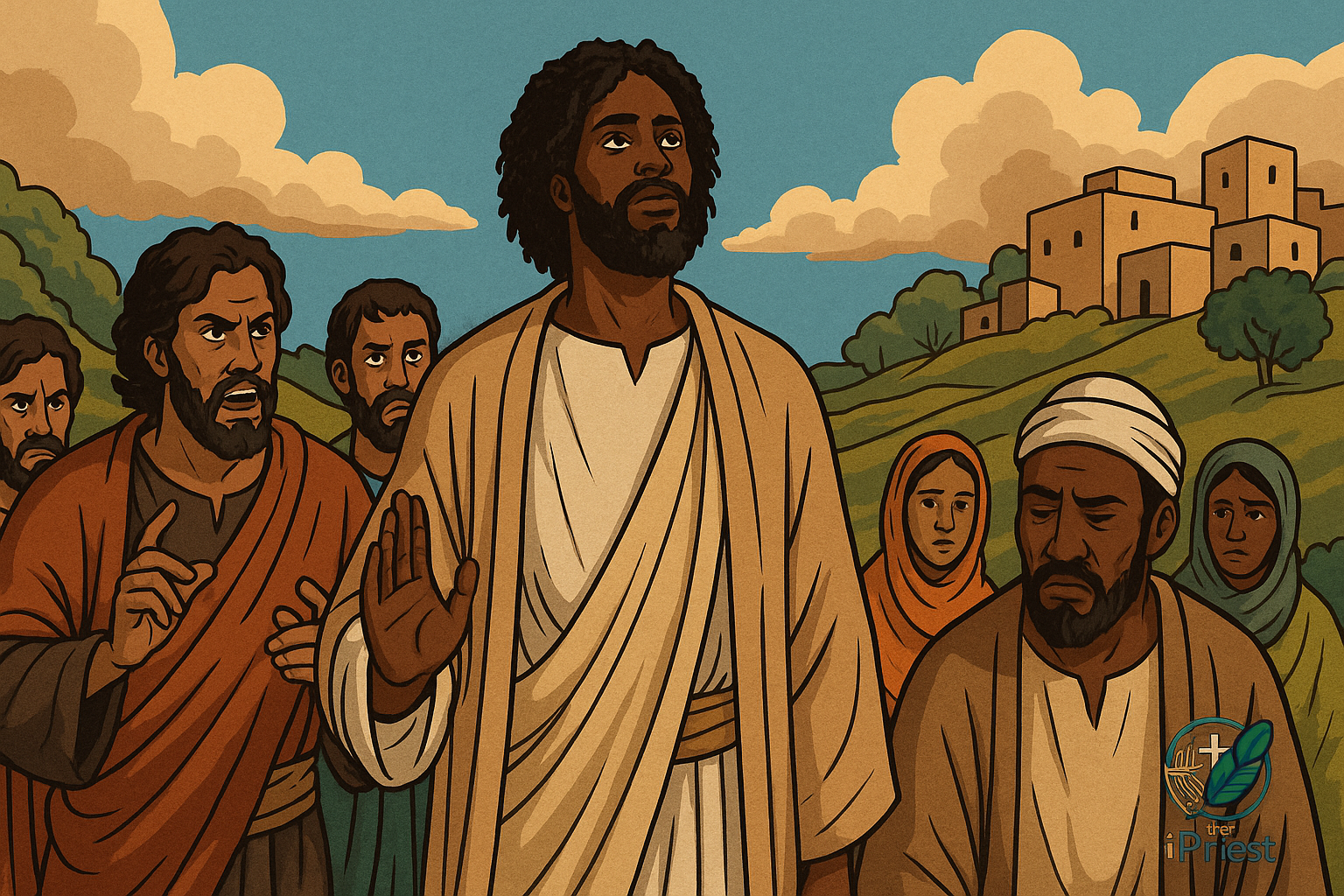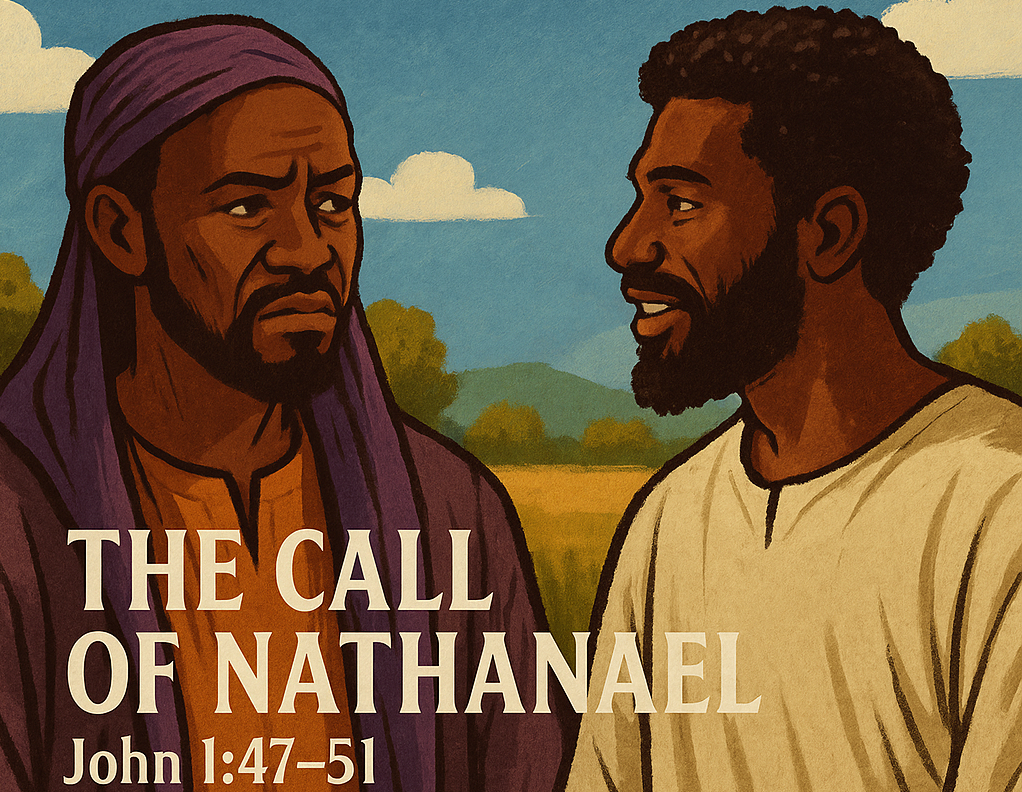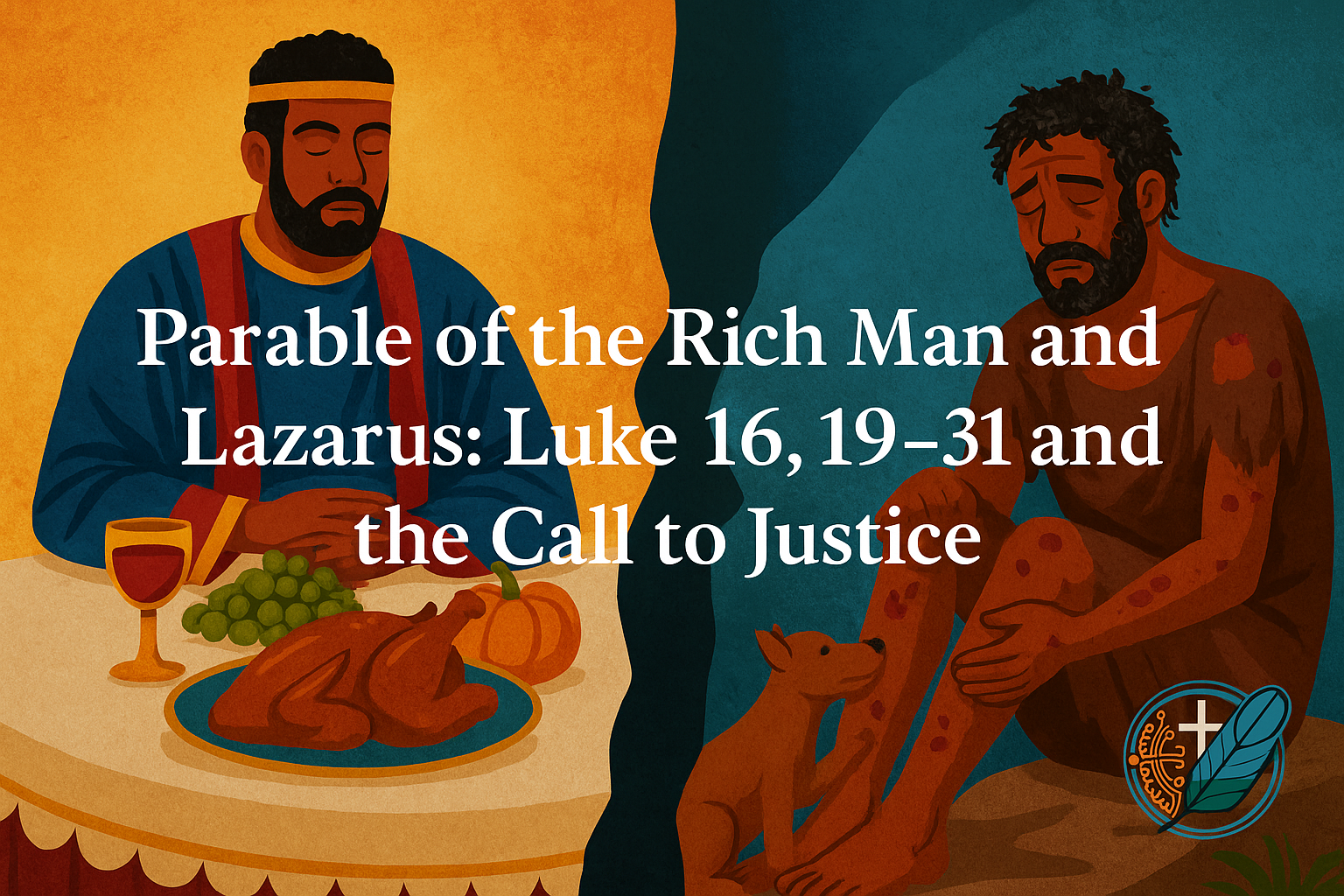Every year during holy week, Christians around the world commemorate Jesus’ final days on earth, beginning with his triumphant entry into Jerusalem on Palm Sunday. In many parishes, this moment is not only remembered but brought to life through different sought of symbolic rituals, dramatic reenactments, and communal celebrations. These efforts are often motivated by a desire to engage with the Gospel stories in significant ways. However, the way we choose to represent Christ—and the symbols we use—matters greatly.
This reflection offers a few key considerations for anyone seeking to dramatize the Gospel meaningfully and faithfully.
Creative Expression and Its Limits
This year, as in others, I observed a good number of Gospel dramatizations. Three stood out for me:
- One priest invited parishioners to lay down their garments as he processed through the church grounds.
- Another was carried on a donkey in imitation of Jesus’ entry into Jerusalem.
- A large log of wood nearly killed a young man during a guise of crucifixion reenactment.
Though all these incidences are supposed to help the faithful connect with the Passion narrative, the chosen images could be easily misinterpreted as some directly misrepresent Christ’s very nature and mission.
Begin with a Christological Lens
Before engaging in any dramatization of the Gospel, it is very important to understand their theological foundation. Philippians 2:5–8, commonly referred to as the Christological hymn, provides us with a fundamental lens for understanding who Jesus is and what he truly represents:
“In your relationships with one another, have the same mindset as Christ Jesus:
Who, being in very nature God, did not consider equality with God something to be used to his own advantage; rather, he made himself nothing by taking the very nature of a servant, being made in human likeness.
And being found in appearance as a man, he humbled himself by becoming obedient to death— even death on a cross!”
This pericope from the letter of Saint Paul to the Philippians grounds us in the reality of the Kenosis-self-emptying of God. Contrary to the rulers of history who sought for divine power, Christ willingly chose the opposite: he “did not consider equality with God something to be used to his own advantage; rather he made himself nothing by taking the very nature of a servant, being made in human likeness.” (Phil. 2:6-7). His later (re)glorification will come because of his humility and obedience unto death (Phil.2:11).
 This was Jesus’ story: born into poverty, he stood up for the poor, the marginalized, the oppressed, and those rejected by society. He died on the cross, was buried in a borrowed tomb, and rose again on the third day. These events in Christ’s life were not accidental but a divine choice. This is visible in all his teachings and the history of his existence, both in the pre-and post-resurrection periods.
This was Jesus’ story: born into poverty, he stood up for the poor, the marginalized, the oppressed, and those rejected by society. He died on the cross, was buried in a borrowed tomb, and rose again on the third day. These events in Christ’s life were not accidental but a divine choice. This is visible in all his teachings and the history of his existence, both in the pre-and post-resurrection periods.
A Call for Discernment
This text aims not to question the place of dramatization in Christian worship. On the contrary, it is to propose a better way of doing it because when it is done thoroughly, it becomes a strong expression of faith. For example, liturgical dramas were very popular in the Middle Ages, and most were around the Easter mysteries.[1] Yet, before any dramatization, we should ask ourselves:
- What message is this symbol conveying?
- Does it reflect the Gospel’s core truth about who Jesus is and what he came to do?
Choosing the wrong metaphors doesn’t just risk confusion—it can unintentionally obscure or even contradict the essence of the Gospel.
When Metaphors Miss the Mark
For example, while considering the case of Jesus’ triumphant entry into Jerusalem, one should understand that when Jesus chose a colt for his entry into Jerusalem, it was in mockery of the empire, the Roman soldiers, and all those leaders who relied on physical force.
This is why whenever Christ is portrayed as a warrior king, as in the first case we mentioned, we not only have a flawed metaphor but also a Christological issue. Similarly, when religious leaders imitate earthly kings in the name of imitating Christ, they betray him. Therefore, even though the priest who made his people put their wrappers on the ground might have intended to represent the kingship of Christ, his choice of warrior king is an incorrect metaphor because he embodied everything Christ opposed.
Likewise, the image of a priest being carried on a donkey may lose its theological meaning if that symbol no longer resonates in the same way in many contexts today. In the cultural context of the Americas, donkeys do not symbolize peace, humility, or resistance to empire. As such, its use may not communicate the Gospel message effectively—or at all.
Context Matters
Symbols do not exist in a vacuum. Their meaning depends on the cultural and historical contexts in which they are used. A metaphor that made sense in ancient Jerusalem may carry a different or diminished meaning in many societies today. When adapting Gospel narratives, we must consider how our audience interprets the symbols we use—and whether those interpretations serve the Gospel’s core message.
The case of the young man who nearly died during crucifixion will only make sense if, in the context it was enacted, crucifixion has any cultural value. A good example of context-based reenactment is the movie Son of Man by Mark Dornford-May.[2] In this movie, which depicts the life of Christ, the author bases it on the political context of South Africa. He reimagines the Gospels in modern Africa, exploring compassion, corruption, love, and betrayal within a conflicted society, mirroring contemporary African struggles. At the end of the movie, though Jesus is seen hanging on the cross, he did not die on the cross but was initially secretly killed and buried in an unmarked grave. This is how context speaks in a Gospel reenactment.
A Counter-Imperial Messiah
As we explained, the context matters, and to understand how the Gospel interacts with our context, we should always understand that Christ is a Counter-Imperial Messiah. His life and ministry consistently challenged the political and religious expectations of his time. His teachings, healings, and miracles were centred on the marginalized—the poor, the outcast, and the oppressed. These acts were not only spiritual but also deeply political: they subverted the empire’s narratives of control, power, and privilege.
When Jesus fed the hungry, he rejected Rome’s claim to provide peace and prosperity. When he said, “Peace I leave with you; my peace I give you. I do not give to you as the world gives” (John 14:27), he was directly contrasting the Gospel’s peace with the Pax Romana—a peace built on domination and fear.
As we explained, his choice of a colt for his entry into Jerusalem was a deliberate mockery of imperial pageantry, not a replication of it. He never sought to replace the emperor but to reveal the futility of imperial power altogether. Despite this, many misunderstood his mission and celebrated him as a warrior king. When he failed to meet those expectations, the crowd quickly turned: “Crucify him! Crucify him!” (Luke 23:20).
Conclusion
In this Holy Week and beyond, let us be conscious of how we express our faith. Let us always do so with discernment, humility, and theological awareness. Let our symbols point toward the real Christ—not a distorted image shaped by the very powers he came to overturn. The Gospel, dramatized well, is not about performance—it’s about revelation. May our creativity always serve that sacred purpose.
- [1] The Editors of Encyclopaedia Britannica, ‘Liturgical Drama’, Encyclopaedia Britannica, accessed 17 April 2025, https://www.britannica.com/topic/liturgical-drama.
- [2] ‘Son of man’, Africiné, accessed 17 April 2025, https://www.africine.org/film/son-of-man/1680.
-
Facebook
-
Twitter
-
Linkedin
-
Whatsapp
